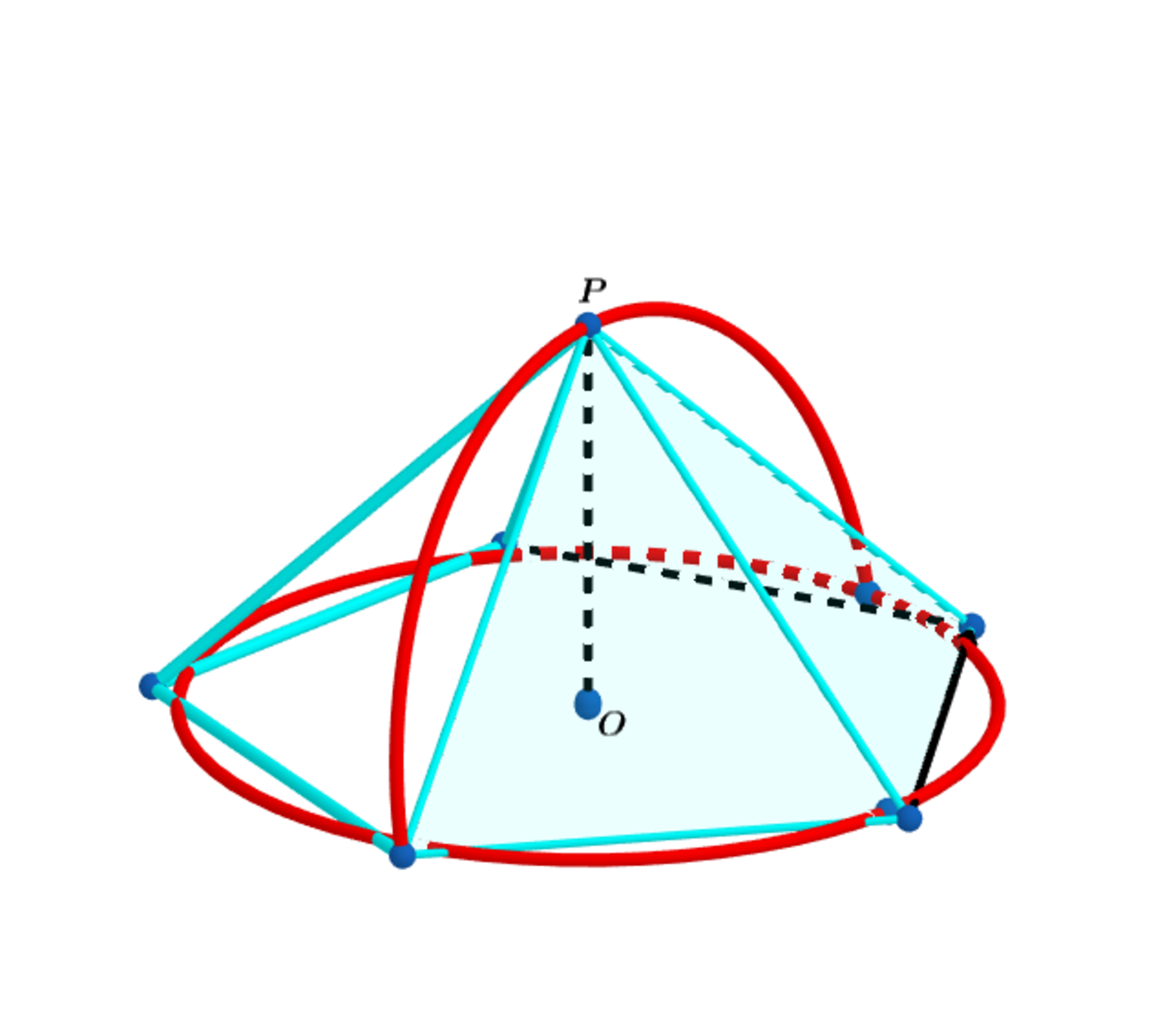All Angles!

Extend the above diagram to a pyramid whose base is a regular -gon.
Let be the center of the regular - gon and construct a circle centered at whose circumference is equal to the perimeter of the -gon. Folding the arc of the semi-circle at a right angle, as shown above, the radius of the semicircle becomes the height of the -gonal pyramid.
Let be the obtuse angle made between two adjacent faces, the slant height and the edge angle.
- Find , and .
- Using find the sum of the obtuse angle made between two adjacent faces and the slant height angle and the edge angle (in degrees).
The answer is 250.607632797217.
This section requires Javascript.
You are seeing this because something didn't load right. We suggest you, (a) try
refreshing the page, (b) enabling javascript if it is disabled on your browser and,
finally, (c)
loading the
non-javascript version of this page
. We're sorry about the hassle.
Let each radii of the regular n -gon be a and A ( 0 , 0 , 0 ) , B ( a cos ( n 2 π ) , − a sin ( n 2 π ) , 0 ) , C ( a cos ( n 2 π ) , a sin ( n 2 π ) , 0 ) and P ( 0 , 0 , r ) .
A B = − 2 a sin 2 ( n π ) i − a sin ( n 2 π ) j + 0 k
A C = − 2 a sin 2 ( n π ) i + a sin ( n 2 π ) j + 0 k
A P = − a i + 0 j + r k
⟹ u = A P X A C = − a r sin ( n 2 π ) i − 2 a r sin 2 ( n π ) j − a 2 sin ( n 2 π ) k
and
v = A P X A C = a r sin ( n 2 π ) i − 2 a r sin 2 ( n π ) j + a 2 sin ( n 2 π ) k
⟹ u ⋅ v = 4 a 2 sin 2 ( n π ) ( ( 2 r 2 + a 2 ) sin 2 ( n π ) − ( r 2 + a 2 ) )
and
∣ u ∣ 2 = ∣ v ∣ 2 = 4 a 2 sin 2 ( n π ) ( ( r 2 + a 2 ) − a 2 sin 2 ( n π ) )
⟹ cos ( θ n ) = ∣ u ∣ 2 u ⋅ v = ( r 2 + a 2 ) − a 2 sin 2 ( n π ) ( 2 r 2 + a 2 ) sin 2 ( n π ) − ( r 2 + a 2 )
Let a ∗ be length of each side of the n -gon ⟹ a ∗ = 2 a sin ( n π )
and n a ∗ = 2 π r ⟹ r = 2 π n a ∗ = π a n sin ( n π ) ⟹
cos ( θ n ) = ( n 2 − π 2 ) sin 2 ( n π ) + π 2 ( sin 2 ( n π ) ) ( 2 n 2 sin 2 ( n π ) + π 2 − n 2 ) − π 2
⟹ cos ( θ 1 3 ) ≈ − 0 . 9 4 1 5 9 7 8 1 8 0 4 1 9 5 7 5 ⟹ θ 1 3 ≈ 1 6 0 . 3 2 1 6 4 3 9 3 5 1 2 3 .
The height of one of the congruent triangles of the n -gon is h ∗ = a cos ( n π ) ⟹ tan ( s n ) = h ∗ r = π n tan ( n π )
and tan ( e n ) = a r = π n sin ( n π )
⟹ s 1 3 ≈ 4 5 . 5 6 5 3 6 8 8 4 7 6 7 1 ∘ and e 1 3 ≈ 4 4 . 7 2 0 6 2 0 0 1 4 4 2 3 ∘
⟹ θ 1 3 + s 1 3 + e 1 3 ≈ 2 5 0 . 6 0 7 6 3 2 7 9 7 2 1 7 ∘ .
Note: Using the inequality cos ( x ) < x sin ( x ) < 1 ⟹ cos ( n π ) < π n sin ( n π ) < 1
⟹ lim n → ∞ tan ( s n ) = lim n → ∞ tan ( e n ) = 1 and lim n → ∞ cos ( θ n ) = − 1 as it should be.